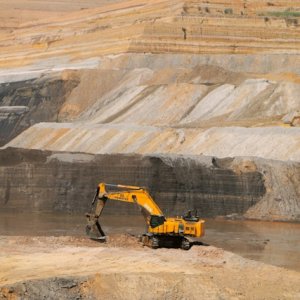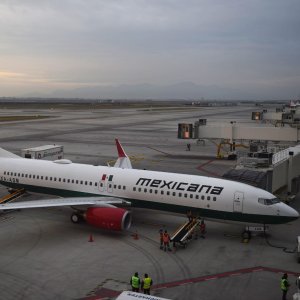
Mayan Train’s Development Journey
 By Lorenzo Núñez | Livestream Producer -
Thu, 06/17/2021 - 11:22
By Lorenzo Núñez | Livestream Producer -
Thu, 06/17/2021 - 11:22
The Mayan Train remains one of the most important infrastructure projects of President López Obrador’s administration. The Mayan Train is set cover a distance of approximately 1,500km, crossing the states of Chiapas, Tabasco, Campeche, Yucatan and Quintana Roo. The main objective of this massive project and the investment in its construction is to promote economic growth in the country’s southeast. The train also set to increase tourism numbers, by promoting underdeveloped and often marginalized areas. Historically, the geographical conditions and available connectivity infrastructure have limited the exploitation of the region's potential, as well as the opportunities for inhabitants, according to state officials. This is set to change.
The People Behind the Mayan Train
The Mayan Train is divided in seven sections, which were part of a bidding competition with FONATUR ultimately deciding the winner for their construction. FONATUR is also purchasing the majority of the material required for construction. Who were the victors in this competition?
The first section (Palenque – Escarcega, 228km) is under the responsibility of Mota-Engil Mexico, a leading company in the construction of infrastructure, with extensive international experience and distinguished for being a socially responsible company. This section required an investment of US$780 million and is set to generate over 850 direct jobs only for land clearing and the setting up of work camps before construction even begins. Over time, the number of jobs will increase to well over 21,000 direct and indirect positions by the end of 2021 alone, according to the official project document. “We are making history by communicating the ancient Mayan cities by train. We are talking about the most important region in the world for its archaeological richness. The whole Mayan area will be known and besides the cultural aspect, it is a program that will promote the development of the southeast,” said President López Obrador during the inauguration of the project.
The second section (Escarcega – Calkini, 235km) was assigned to Operadora CICSA in agreement with FCC Construcción. This section of the Mayan Train crosses the state of Campeche with a proposed budget of US$923 million. “This section has already been started with the acquisition of 30,481 tons of rail, which are being produced in China by the Angang Group,” said Rogelio Jiménez Pons, General Director of Fonatur, during a presentation in Campeche.
The third section (Calkiní – Izamal 172km) of the Mayan Train is under the responsibility of Construcciones Urales and GAMI Ingeniería e Instalaciones. This section will receive an investment of US$511 million. The fourth section (Izamal – Cancún 257km) was awarded to Ingenieros Civiles Asociados (ICA), which is in charge of other federal infrastructure projects in the country, such as Metro’s Line 12.
The fifth segment (Cancún – Playa del Carmen 49.8km and Playa del Carmen – Tulum 60.3km) corresponds to 121km of double track from Cancun to Tulum. This section was awarded to the Ministry of National Defense (SEDENA), since it has the knowledge, professionalism, human resources and adequate materials sufficient and necessary to carry out the project, according to the government’s website. The final two sections (Tulum – Bacalar 254km and Bacalar – Escárcega 287km) will be under the supervision of SEDENA, as well, according to President López Obrador. The idea is that once the ministry is done building the new airport in Santa Lucia, it will start working on the Mayan Train.
Benefits and Opportunities of the Mayan Train
Now that contracts have been signed with all the aforementioned developers, opportunities loom over the horizon. The Mayan Train is expected to reach 30 percent completion by the end of 2021 and President López Obrador and FONATUR remain confident in the positive impacts the project will bring.
President López Obrador said during a visit to the archaeological site of Chicanna in Xpujil, Campeche, that this new project will not only connect five southeastern states but will also allow millions of foreign tourists to visit the region's archeological and cultural sites, without affecting the environment. “Those who visit us from other countries can know, going into the southeast, all this great cultural, artistic and archaeological wealth unique in the world,” said the president.
FONATUR has also communicated that the train will be used by 200,000 people per day by 2030. The Cancun-Tulum section could see up to 80,000 daily passengers. In addition, national and international tourism will be boosted in the Cancun-Riviera Maya area thanks to better connectivity that will reduce commuting times by up to 46 percent for workers, as well as tourists. Furthermore, new sustainable communities will be developed that will allow a greater demand for tourism services.
In addition to tourism benefits, FONATUR considers that younger generations will be the ones who benefit the most from the Mayan Train and invites them to participate in the project. “This government must show real change, which means allowing renovations and the creation of new development plans for the entire country, where young people can contribute with a wider view of the world. Young people want to be a part of the Mayan Train and the project must meet their expectations,” said Jiménez Pons, as reported by MBN. Carina Arvizu, Director of Mayan Train Urban Development, also claimed that the project’s construction would pull 1.1 million people out of poverty in the region. She also said average schooling levels would increase by two grades. By 2023, the Mayan Train would generate an economic benefit for the Yucatan peninsula of almost US$774 million, according to Arvizu. This figure could increase to over US$7 billion by 2050. In addition, FONATUR’s calculations show the train has so far created 40,000 jobs. By 2030, Arvizu expects that number to increase to 715,000 people employed in the construction, operation and maintenance of the Mayan Train’s 1,555km of rail lines and 19 stations.
Real Estate investment can also see an increase as the Mayan Train increases the attractiveness on local real estate, Grupo CCMIA, led by Ricardo Medina, said in an interview for El Financiero, that the company plans to invest US$146 million to expand in a couple of southern Mexican states of Yucatan and Quintana Roo. "We decided to look to the south because it is in the focus of the government, it has very interesting projects such as the Mayan Train, the Transisthmian, it becomes an interesting work that is in the south," said Medida. "There is a lot of movement in Merida, there is an impressive real estate boom. There is talk of a real estate bubble that will soon burst.”
Central American Immigrants are also getting a piece of the cake. In a morning press conference, López Obrador pointed out that the railroad project requires "many workers" and announced a new program that will allow immigrants to be a part of construction works. “We are going to implement a special program to support truckers in the southeast because there are not enough dump trucks. We have never invested so much in the southeast, so there is a lot of construction work and a large labor force is also being demanded. There is a possibility to help migrants in this area,” he stated.
Speed Bumps in Construction
There have been many controversies surrounding the Mayan Train, including construction companies getting into trouble, constant work suspensions and a lack of environmental studies. Back in February 2021, a judge from Yucatan granted a provisional suspension for all Mayan Train construction in that state, corresponding to the train’s third segment, in response to three separate lawsuits made by indigenous civil associations Múuch’ Xíinbal Assembly for the Defense of Mayan Territory and the Chuun t’aan Maya Collective. But these are not the first. As reported by MBN, dating all the way back to December of 2020, a first circuit judge based in Campeche shut down construction of the Mayan Train’s second segment. The suspension applied to the entirety of this second segment. President Lopez Obrador’s response is usually the same to these suspensions. He considers all of them being part of a political campaign against his administration.
Unfortunately, this may not be the toughest speed bump in the construction of the Mayan Train. Many federal infrastructure projects are overseen by the same construction company, which has been a point of controversy because certain companies are on the spotlight for not providing an adequate maintenance. The most recent example is the Metro Line 12 collapse on May 3, where 26 people lost their lives. Line 12 was built by the consortium Carso, Alstom, and Ingenieros Civiles Asociados (ICA), which is also in charge of the construction of the fourth segment of the Mayan Train, as well as the Dos Bocas refinery. ICA had previously informed that Line 12 had problems with the rails due to their incompatibility with the trains. Construcciones y Auxiliar de Ferrocarriles (CAF Mexico), however, reported that the rails were designed under the supervision of Mexico City Metro authorities and met all qualifications. Moreover, the Line itself had already been monitored by another government favorite called Servicios y Sistemas Aplicados (ISSA), as previously reported by MBN.
There are still some questions left unanswered and skepticism remains unaddressed by the government or companies involved. Despite controversies, however, the Mayan Train remains one of the most important projects in López Obrador’s administration. Expectations are high, especially for the tourism sector. If the promised benefits turn out to be what FONATUR is expecting, quality of life in the peninsula could change for the better.
















